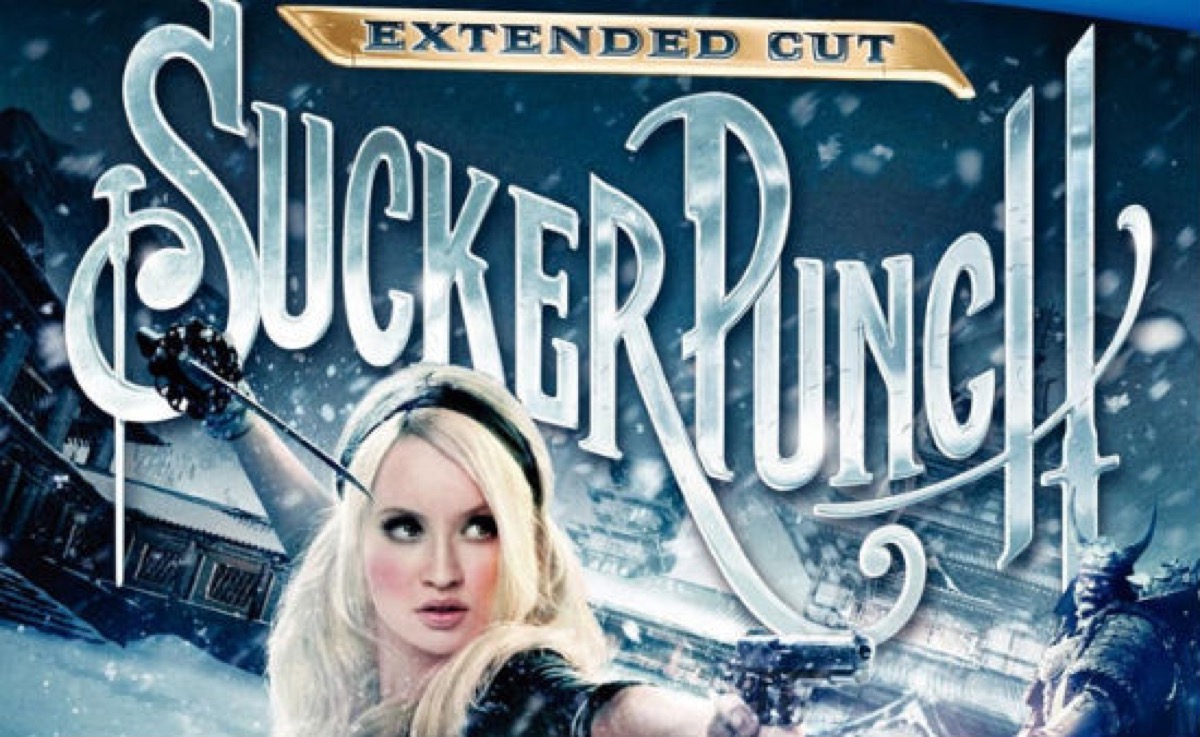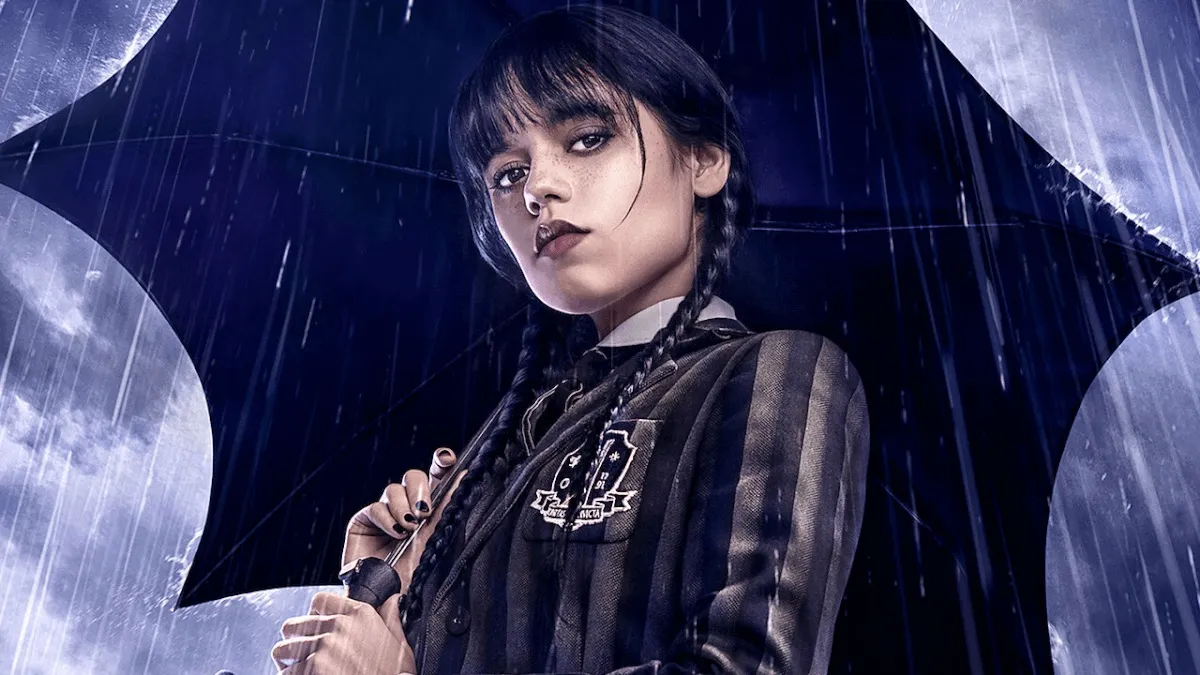*General plot spoiler warnings for Sucker Punch, V for Vendetta, and content warnings for sexual assault/rape.*
You’ve all heard of #ReleaseTheSnyderCut, but the latest hashtag trend that’s quickly picking up momentum is #ReleaseTheSnyderPunch. The story behind these hashtags and why it’s time to restore Zack Snyder’s Sucker Punch is practically epic enough to be its own feature film.
The #ReleaseTheSnyderCut movement first picked up momentum after the theatrical release of Justice League in 2017. Many fans subsequently dubbed this version “Josstice League,” as the infamous director Joss Whedon was brought in to direct reshoots after Zack and Deborah Snyder decided to step away from the combined professional and personal stress of the battles of the ongoing efforts to derail Zack’s artistic vision and a personal family tragedy.
Through relentless hashtagging, other publicity campaigns, and fundraising over $500K for the American Foundation for Suicide Prevention, Snyder’s fans had provided Zack and Deborah Snyder with measurable analytics of considerable audience interest in the Snyder Cut. This helped the Snyders to make a deal for the release of Zack Snyder’s Justice League, which premiered on HBO Max on March 18.
This release set a new precedent in the perpetual clash between artists and corporations in show business. Justice League (2017) wasn’t the first time a director has had their work considerably interfered with before being released under their name, but the increased understanding of this pattern of corporate meddling among film/TV fans has emboldened frustrated fans to mobilize on social media and demand that creatives like Zack Snyder, David Ayer, and even the late, great Joel Schumacher be able to release their artistic visions as they originally intended.
This brings us to Sucker Punch and the #ReleaseTheSnyderPunch movement.
In the promotional tour for his latest Netflix film Army of the Dead, Zack Snyder gave an interview with Variety about his filmography and had this to say about Sucker Punch:
“That was the first time where I really faced true, radical restructuring of the film for it to be more commercial, and there is a director’s cut of that movie that has yet to be released. I’ll say that out loud.”
The story of Sucker Punch as it currently exists, both in the theatrical and extended DVD cut, is fascinating and cerebral. Babydoll (Emily Browning) is sent to a psychiatric hospital by her abusive stepfather after he murders her younger sister. He also bribes an orderly named Blue Jones (Oscar Isaac) to forge the signature of psychiatrist Vera Gorski (Carla Gugino) so that Babydoll will be lobotomized.
When Babydoll arrives at the facility, she enters the first layer of her dream world and imagines that she is a new dancer being forced to perform in a brothel alongside her eventual group of friends Rocket (Jena Malone), Sweet Pea (Abbie Cornish), Amber (Jamie Chung), and Blondie (Vanessa Hudgens). This world that Babydoll imagines is more vibrant and brightly colored, with dazzling outfits and dance numbers that the other lead characters dance in.
When Babydoll imagines herself doing fantastical things, she and the other girls are enacting a plan to try to escape from the man and brothel that is holding them captive. Babydoll is made to dance in her dream world, but we as the audience never see her dancing. Instead, we see her dream within a dream in which she and the other girls do fantastical things like battle Orcs and robots, and slay dragons.
This visual spectacle of action doesn’t only act as a foundation for the stylish action sequences that have become a signature of Zack Snyder’s filmography. The use of imagination has been researched and documented as a response to stress and trauma. More formally, this concept is known as fantastic reality ability (FRA) which is used by professionals in trauma-focused therapy. Thus, the entire plot point of Babydoll using her imagination as a coping mechanism for the considerable trauma she has and continues to experience is not just a fantastical idea conjured by Zack Snyder and co-writer Steve Shibuya, but one deeply rooted in the very real cycles stemming from traumatic experiences.
There are two noteworthy changes worth highlighting in the discussion of restoring Sucker Punch to its original creative design. One was the original ending, and another was a scene that was restored in the extended DVD cut. Emily Browning shared in an interview with Nylon, during the film’s press tour, some scathing words about the MPA (known in 2011 as the MPAA) due to their sexism and the pressures they placed on Zack Snyder’s editing process.
When Babydoll’s plan for the girls to escape goes awry, she decides to sacrifice herself so that Sweet Pea can make her escape. Babydoll is brought to meet the High Roller (Jon Hamm), and Babydoll owning her sexuality and consenting to be intimate with him was a tipping point for the MPA to slap an R rating on the film. According to Browning, Snyder repeatedly edited the scene down in an effort to secure a PG-13 rating, but the MPA wasn’t satisfied until so much had been removed that it appeared as if Babydoll wasn’t consenting at all. Snyder didn’t want to send that message of non-consent, so he cut the scene entirely before putting it back into the extended DVD version.

The negative backlash against Sucker Punch is especially peculiar considering that many accused the film of condoning the very subject matter that the film was critiquing. Snyder has repeatedly and consistently stated in interviews spanning from 2011 to 2021 that the film is an indictment of the misogynistic parts of geek culture that objectify women. In a post-Me-Too world, it is considerably easier to understand and articulate the subject matter of the film. Oscar Isaac’s bone chilling performance as the villainous Blue Jones can easily be seen as emblematic of the powerful studio executives, producers, CEOs, etc. that have been exposed as subjugating women (or people from other genders) through coercion or brute force. Blue Jones sees the women in the brothel as his possessions, and his obsession with trying to own and violate Babydoll is deeply unsettling.
If Zack Snyder had intended to make a film that objectifies the women leads the way some have accused him, we would have seen exploitative shots of Babydoll doing her provocative choreography instead of exquisitely crafted action sequences that empower the leading women of the story. As far as we can tell from the interview quotes and soundbites currently floating around online, the most significant difference left to restore is the ending. In a 2011 interview with Film School Rejects, Snyder shared that the original ending had Babydoll standing up after being lobotomized when the flashlight is shone in her face and singing “O-o-h Child” as the scene shifts to her performing in the theatre, and she is joined by all of the dead girls before the curtain closes.
Musicals have never been a genre to shy away from surrealism in their storytelling, especially when it comes to the musical numbers. Even non-musical-genre films like V for Vendetta can opt to have a less “realistic” ending like Snyder’s original Sucker Punch ending that brings people back from the dead to make one last impact before the credits roll.
Even in 2011, Snyder was saying that the ending had been changed, he had to edit the film’s tone down to make it less dark, and there were some unfinished VFX for his true vision. The release of Zack Snyder’s Justice League has set a new precedent. If one meddled-with Snyder film can be restored, why can’t Sucker Punch be next? Snyder has admitted to forgoing a salary for the restoration and release of Zack Snyder’s Justice League, so we know that his efforts to restore his art are not profit-driven.
One complication can come from the fact that Sucker Punch in its current versions still get licensed by various networks and streaming platforms to show to their viewers, and releasing a shiny new version could lower the value of those licenses. However, Snyder has proven himself to be an icon of pop culture. People can’t stop talking about him or his films. Audiences have proved that they will show up in droves for anything he releases, and platforms like Netflix have been taking note.
If that weren’t enough, now the Sucker Punch lead actresses have gotten involved. Jena Malone, Abbie Cornish, and Jamie Chung have all publicly expressed their support on social media for the #ReleaseTheSnyderPunch movement. Cornish reposted Malone’s Instagram story about the director’s cut, Malone also tweeted her support despite being usually inactive on the platform, and Chung tweeted about it after being tagged in an article about the movement.
The #ReleaseTheSnyderPunch movement is about far more than appeasing Snyder’s most vocal fans. The Snyder Cut of Justice League should not be an isolated incident of artistic integrity triumphing over corporate meddling. The culture of show business needs to fundamentally shift in favor of artists instead of studio executives and stockholders.
It’s especially unsettling to think about how Snyder’s first feature film that was made without a preexisting IP was directly calling out the misogynistic objectification of women and rape culture six years before the Me Too movement, and that was the first film of his that so many people with considerable power were determined to pull apart, dilute, and censor. Ten years after its release, the film’s supporters have found their fight and won’t give up until someone Releases The Snyder Punch.
(image: Warner Bros.)
Want more stories like this? Become a subscriber and support the site!
—The Mary Sue has a strict comment policy that forbids, but is not limited to, personal insults toward anyone, hate speech, and trolling.—










Published: Jun 7, 2021 12:48 pm